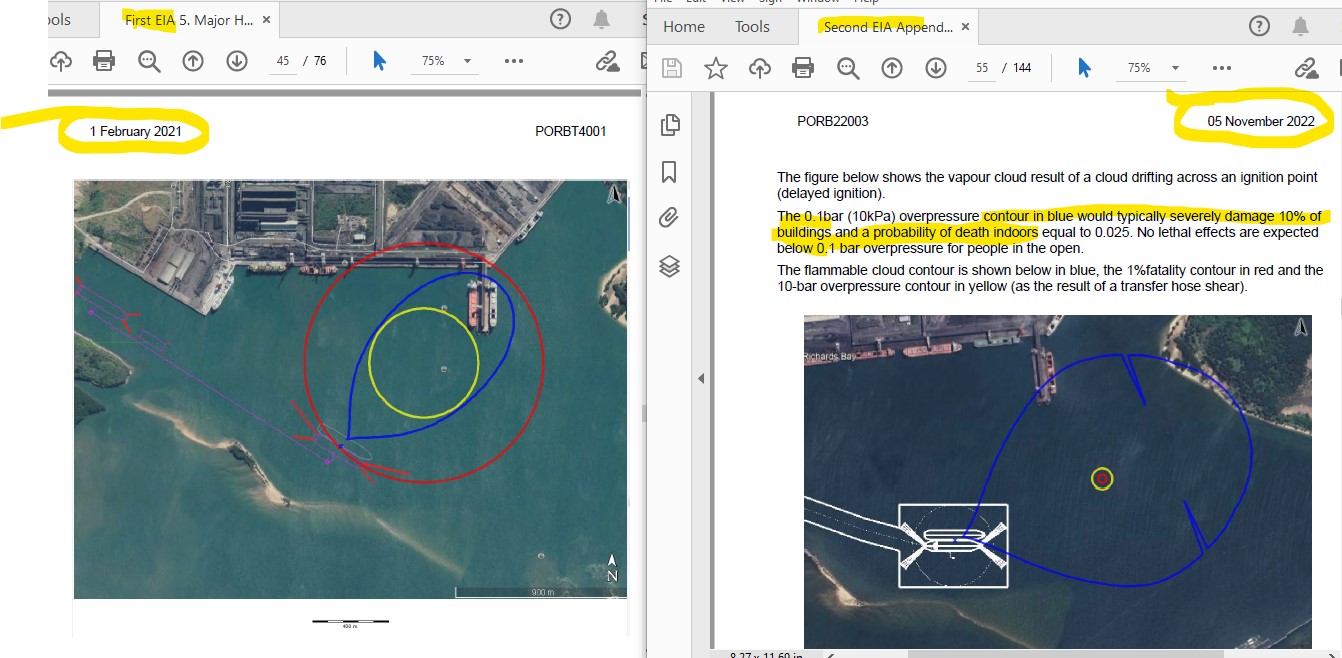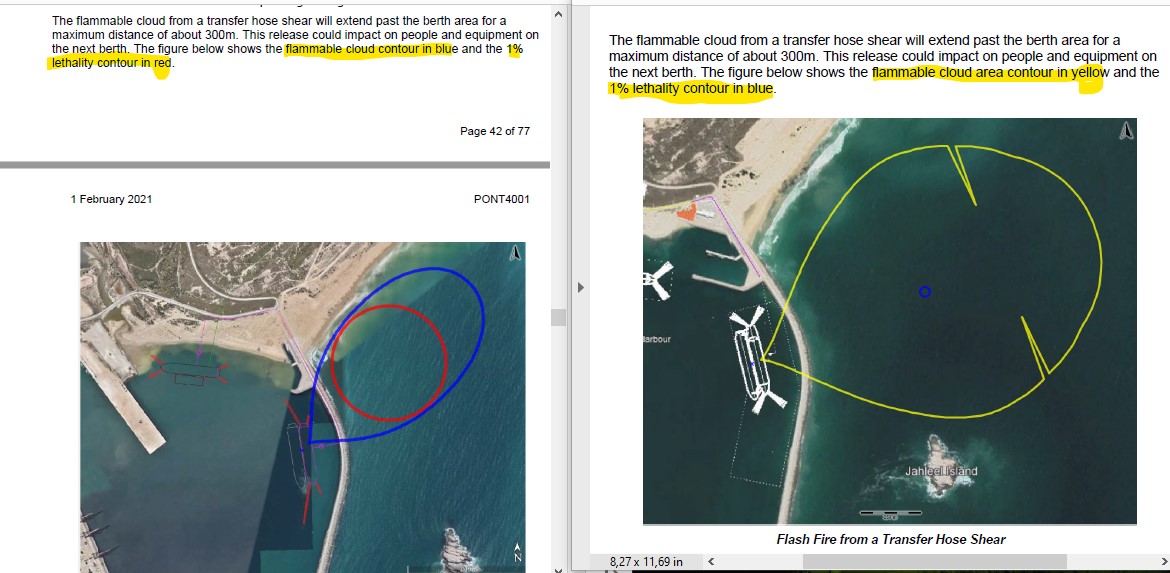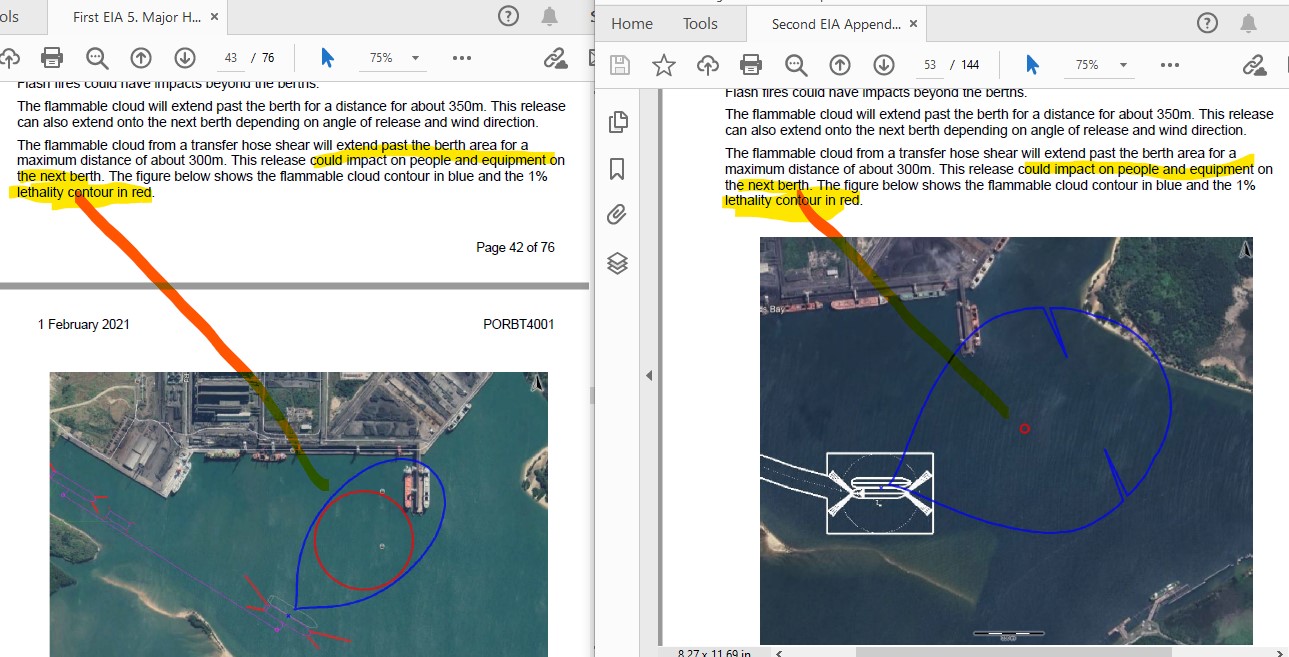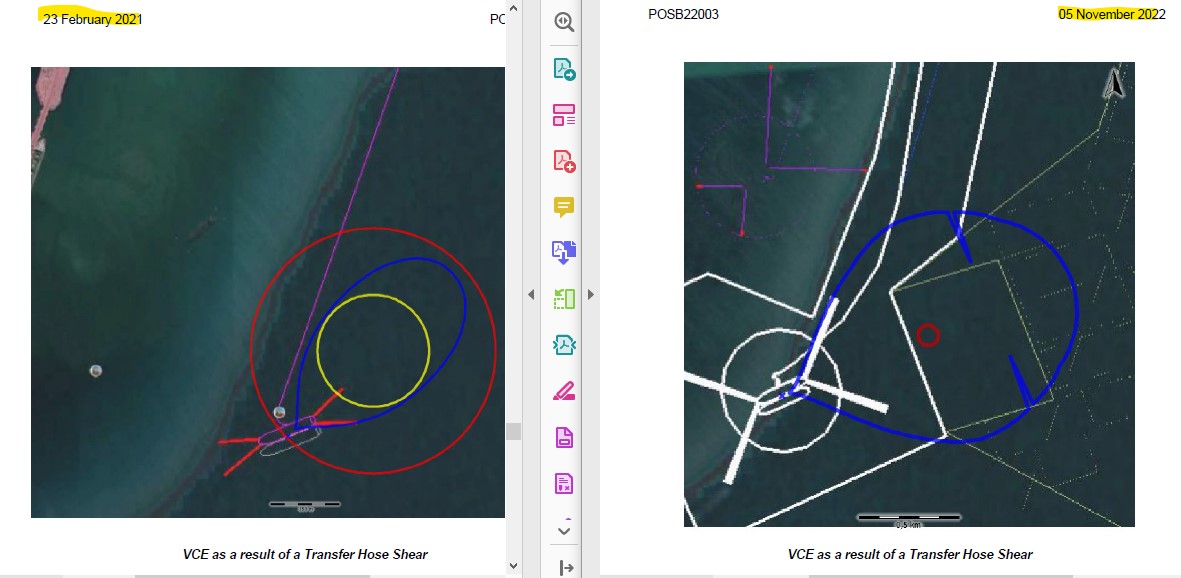Karpowership consultants have declined an opportunity to fully explain belated revisions to three specialist studies dealing with the deadly hazards of mooring several power ships in three SA ports for the next 20 years.
The revisions appear to have lowered several of the predicted risk profiles for harbour workers should fires or explosions break out accidentally around the proposed gas-to-power ships and pipelines in Richards Bay, Ngqura or Saldanha Bay.
/file/dailymaverick/wp-content/uploads/2022/12/FSRU-KP-1.png)
For example, the predicted fatality distance of a transfer hose “flash fire” (previously calculated at 879m) has decreased by almost half to 499m. The maximum fatality distance for a “jet fire” drops from 568m to 188m, while in another scenario, another jet fire impact distance drops from 220m to just 15m.
Last year, Karpowership consultants submitted an environmental impact assessment (EIA) report to the Department of Forestry, Fisheries and the Environment (DFFE) as part of the approval process for the controversial Turkish-led “emergency solution” to the Eskom electricity crisis.
That study — rejected by DFFE assessors as flawed and inadequate — also contained three specialist reports compiled by Claude Thackwray, the head of Cape Town-based Major Hazard Risk Consultants.
Despite standing by her officials in rejecting the flawed EIA process, DFFE Minister Barbara Creecy granted Karpowership another bite at the cherry by giving it extra time to conduct further studies and public consultations as part of an extended EIA process.
Above: a Youtube clip showing an LNG road tanker explosion on the Beijing-Harbin highway in 2018.
The department’s rejection of the first study did not appear to raise explicit concerns around Thackwray’s major hazard installation (MHI) gas fire and explosion risk studies. (Under the Occupational Health and Safety Act, a major hazard installation is defined as an industrial facility which handles dangerous materials which could harm staff and members of the public in the vicinity in the event of an accident such as a major fire, explosion or release of toxic materials.)
Somewhat inexplicably, however, Thackwray has now compiled three fresh reports that contain several changes to the initial reports he signed off on in February 2021.
The new Thackwray reports, dated November 2022, were published as part of the second public participation process during a brief series of online and in-person meetings held last month.
During his recent speech at the start of the 55th ANC Elective Conference, President Cyril Ramaphosa indicated that emergency power would be procured to deal with the country's dire energy problems. Gas ships have consistently been mooted as a source of emergency power despite their term of operation being 20 years.
Visible changes
When Our Burning Planet attended one of the virtual meetings on 23 November, we noticed visible changes to one of his computer-modelled maps depicting the likely consequences of heat profiles, flame distances and death risks if a gas fire or explosion were to occur in Richards Bay harbour.
So, at the online meeting, we asked Thackwray to explain the reasons for the visible differences in at least one of the new risk maps.
He acknowledged that there had indeed been “quite a few changes” and “quite a few [new] inputs”. This was because he had obtained more information about Karpowership vessels since the first EIA risk study, allowing him to produce a second assessment with more accuracy.
In addition, the computer software he used to model the risks was updated on a regular basis by the manufacturers (about every three months), leading to altered risk profiles for gas leaks occurring over water.
Overall, however, the total risk profile of the Karpowership project at Richards Bay had “not really changed”. If anything, Thackwray suggested, “the risk profile, in some ways, is actually higher than the previous one” because some of the modelled fire and explosion distances had increased by up to 95m.
This was his full response to our question (as recorded in the minutes of the public meeting):
/file/dailymaverick/wp-content/uploads/2022/12/Screenshot-2022-12-21-at-19.54.32.png)
Okay… So, what did this mean? No big deal? Nothing to see here. Just some minor “software updates” that changed a few scenarios. What else had changed, we wondered?
So, immediately after the public meeting, we sourced copies of all three MHI reports from the first and second EIAs. Then we placed each harbour report side by side and compared them.
Line by line.
Though the new reports were largely copy-and-paste versions of the first ones, we soon discovered that several other things had changed when reading closely between the lines.
Why?
With some of the computer-modelled maps, it seemed to be a case of comparing chalk and cheese. Here is one example, a map depicting a vapour cloud explosion in Richards Bay harbour:

The sizes of the three colour contours in these two maps are markedly different. In the first map (left), the blue contour — depicting a flammable gas cloud — extends across the harbour to completely cover two ships anchored at the opposite terminal. In the second map (right), the shape of the gas cloud is roughly similar, but the sizes of the red and yellow contours are completely different. The reasons for this are unclear (though it should be noted that in Thackwray’s second report, there are subtle changes to the description of each contour).
In one report, the red contour is described as an area where some fatalities would be expected. In the second report, the red contour is described as a 1% fatality contour.
Here is another example below, depicting the consequences of a flash fire from a transfer hose shear in Ngqura (Coega) harbour.

In the first version (left), the blue contour shows a flammable gas cloud. In the second (right), the gas cloud is shown in yellow. Notably, the second modelled gas cloud does not reach the shoreline. What is most remarkable is the “1% fatality contour” (red on the left) and a vastly smaller “1% fatality contour” (blue on the right).
Similar changes appear in this map, depicting a flash fire from a transfer hose shear at Richards Bay:

Once again, the 1% fatality zone has shrunk to a tiny speck (over open water) in the revised version, whereas in the first version, the red lethality contour almost touches two vessels on the opposite side of the harbour. The direction of the gas cloud also seems to have shifted to a more easterly direction (over open water rather than above a working quay).
Similar “shrinkage” of the red contour fatality zone also appears when comparing vapour cloud explosions in Saldanha Bay.

The question arises: Can all these revisions be attributed to software updates in the TNO Netherlands RISC Curves and RISC Effects modelling software?
Perhaps. But if that is the case, why do software changes only appear to have affected the “1% lethality distances” in Richards Bay and Ngqura harbours, but not Saldanha (see below)?
/file/dailymaverick/wp-content/uploads/2022/12/Comparison-5-All-three-fire-port-distances-compared.jpg)
Initially, all the distances in the table above were identical for all three harbours. However, in Thackwray’s revised study, the lethality distances have only affected Richards Bay and Nqqura.
With just one exception (where the transfer hose leak jet fire scenario has been revised upwards from 86m to just over 200m) the vast majority have been revised downwards for Richards Bay and Ngqura — in some cases by more than double or triple.
Why is that? Could it have anything to do with the fact that the Saldanha Bay gas-transfer ships would be located roughly 4km from the shoreline — whereas, in Richards Bay and Ngqura, gas-loading would occur much closer to land? Or are there other reasons?
We tried to raise this question, and several others, with Thackwray, his co-worker (and son) Terence Thackwray and Triplo4 (the Karpowership environmental consultant), but have not received any responses.
We sent this request to the Thackwrays and Triplo4 on 15 December, requesting comment and clarity on the issues raised, before 2pm on December 20:
Triplo4 replied on 20 December, advising: “The focus currently is on completing the EIA processes for the 3 Karpowership projects, and therefore we will not be able to comply with your deadline. It is expected that any article placed will be objective and based on verified facts.”
We offered the consultants a further 24-hour extension to respond, but no reply has been received. DM/OBP




 Flames engulf the Italian LPG tanker Syn Zania following an explosion during loading operations at the Petkim refinery terminal in Turkey in 2019. (Photo: UEIM Marine Safety Investigation Report)
Flames engulf the Italian LPG tanker Syn Zania following an explosion during loading operations at the Petkim refinery terminal in Turkey in 2019. (Photo: UEIM Marine Safety Investigation Report)